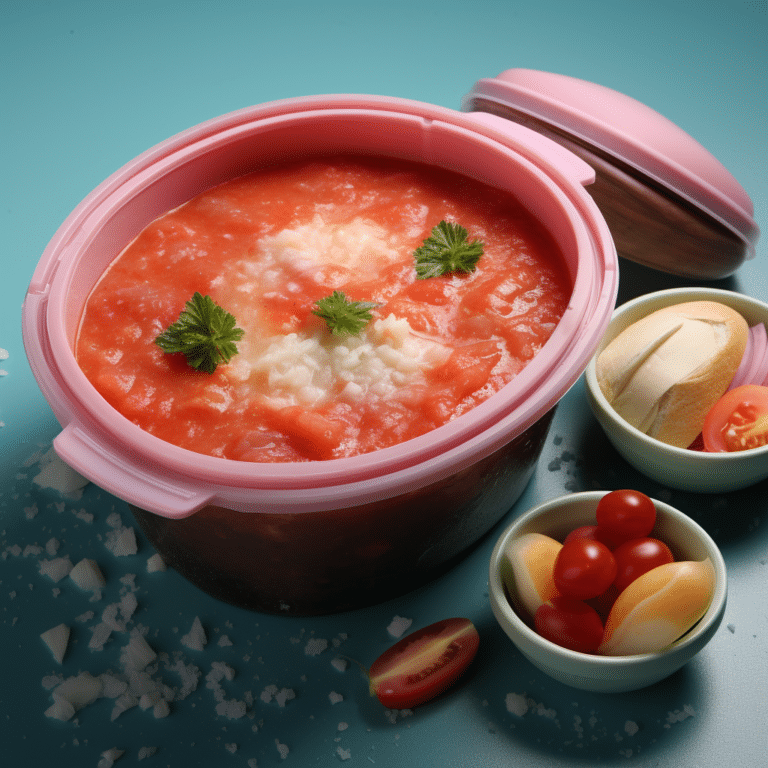Navigating Formula Feeding: Types, Tips, and Choices

Formula-feeding is an alternative to breastfeeding. It’s versatile and provides necessary nutrients.
With various options, understanding the different types of formula can help you decide what’s best for your baby.
Standard baby formula is made to look like breast milk. It has the right amount of carbohydrates, proteins, fats, vitamins, and minerals. There are recipes that are made from soy and are safe for babies with allergies or intolerances. Also, there are special diets for babies who were born early or with a low birth weight, and for babies who have digestive problems.
Ready-to-use formula eliminates measuring/mixing. Pre-mixed formulas come in single-serving bottles/tetra packs – perfect for travel or when on-the-go.
Consult your pediatrician before making changes. Your child’s needs will be taken into consideration.
As a loving parent, you want the best for your baby. Understanding different types of formula promotes optimal nutrition and care. Enhance your baby’s well-being from day one – don’t miss out!
Benefits of Formula Feeding
Formula feeding offers several advantages. It’s convenient and efficient, enabling caregivers to share feeding responsibilities. It can also help with certain medical conditions and can strengthen bonds between caretakers and infants. Plus, formula-fed babies tend to gain weight more predictably.
Modern formulas are designed to mimic breast milk and provide babies with necessary nutrients. The WHO recommends exclusive breastfeeding for the first 6 months of life, but recognizes that formula feeding can be a suitable alternative. However, parents must follow instructions on preparing and storing formula correctly to ensure their baby’s safety and nutrition.
Research has indicated that exclusive breastfeeding is the optimal choice due to its many beneficial effects on health.
Different Types of Formula Feeding
To ensure you have a clear understanding of the different types of formula feeding, let’s dive into the section “Different Types of Formula Feeding” with its sub-sections: powdered formula, liquid concentrate formula, and ready-to-feed formula. By exploring these options, you’ll discover the various solutions available to meet your baby’s nutritional needs.
Powdered Formula
Powdered Formula:
| Serving Size (per scoop) | Reconstitution Ratio | Preparation Time |
|---|---|---|
| 1 scoop | 2 oz water | A few minutes |
Mix powdered formula with water using the reconstitution ratio. One scoop typically with 2 ounces of water. Quick preparation – just a few minutes.
Experts suggest following manufacturer’s instructions exactly when preparing powdered formula. This is to ensure proper nutrition and avoid potential health risks.
Make sure all equipment used in preparing the powder is sterilely clean. Otherwise, it can contain harmful bacteria.
Did you know? According to the American Academy of Pediatrics (AAP), it is advised to feed babies with powdered formula until at least six months. This is due to its nutrient-rich composition.
Liquid Concentrate Formula
Liquid concentrate formula offers convenience and nutrition to babies! It’s made by mixing a concentrated liquid formula with an equal amount of water.
Pros: convenient, accurate nutrition, ideal for travel.
Cons: more expensive than powdered, needs to be refrigerated after opening.
It requires less time and effort for preparation. When using it, make sure to follow instructions carefully for the correct dilution ratio and avoid any health risks.
Pro Tip: follow instructions!
Ready-to-Feed Formula
Ready-to-feed formula provides essential nutrients for infants’ health and growth. It’s made of proteins, carbs, fats, vitamins, and minerals. Below is a table of popular brands and sizes.
| Brand | Size | Age |
|---|---|---|
| Similac | 2 Oz | Newborns |
| Enfamil | 8 Oz | 0-12 months |
| Gerber Good Start | 32 Oz | 0-12 months |
There are many brands offering this type of formula. However, it’s pricey and has a shorter shelf life than other types.
Improvements in handling at the end of the 1960s made it possible to make more ready-to-feed formula. It was an alternative to having to measure and mix powdered or concentrated recipes. It’s used a lot these days by parents who want to make their lives easier without risking their baby’s health.
How to Choose the Right Formula for Your Baby
To choose the right formula for your baby with special dietary needs or concerns, consulting with a pediatrician is essential. This section explores how to navigate the various types of formula feeding, delving into the sub-sections of considering special dietary needs and the importance of seeking professional advice from a pediatrician.
Considering Special Dietary Needs
Babies have unique dietary needs based on their health and allergies. It is important to pick the right formula. Factors to consider:
| Allergy | Special Formula Options |
| Cow’s Milk Allergy* | Hypoallergenic Formula, Soy Formula, Hydrolyzed Protein Formula |
| Lactose Intolerance | Lactose-Free Formula, Soy Formula |
| Reflux or Spit-Up Issues | Anti-Reflux/GERD Formula |
| Galactosemia** | Soy Formula, Galactose-Free Amino Acid-Based Formula |
Ask a healthcare professional for advice on the right formula. Read the ingredients list on the formula to make sure it fits your baby’s needs.
Consulting with Pediatrician
Consulting a pediatrician is a must for getting the right formula for your baby. Consider these 5 points:
- Expertise: A pediatrician provides guidance for picking a formula that suits your baby.
- Health: A pediatrician takes into account any health issues or allergies before selecting the formula.
- Growth: The pediatrician looks at your baby’s growth and development, then suggests a formula with needed nutrients.
- Personalized: The pediatrician provides advice based on your baby’s age, weight, and health, to make sure they get proper nutrition.
- Check-Ups: Regular visits to the pediatrician monitor your baby’s progress and let you adjust their formula intake as needed.
Why does this work?
- Expert advice helps you decide with medical knowledge.
- Considering health prevents any bad reactions.
- Formulas tailored to growth promote well-being.
- Individualized approach means your baby gets the right nutrition.
- Monitoring progress lets you make adjustments, if needed.
Preparation and Storage of Formula
To ensure you are prepared for formula feeding and can handle it with ease, here’s a concise guide on the preparation and storage of formula. Learn the step-by-step process of mixing formula and discover valuable tips for proper storage. With these solutions in place, you’ll be equipped to provide your baby with the nourishment they need.
Step-by-step Guide to Mixing Formula
Mixing formula correctly is key for your baby’s health. Follow these steps to get it right:
- Measure: Put the right amount of water into a clean bottle.
- Scoop: Use the scoop to add the correct number of formula powder scoops to the bottle.
- Mix: Close the bottle and shake it for around 15 seconds till the powder dissolves.
- Check Temperature: Test a drop of formula on your wrist or inner elbow to make sure it isn’t too hot.
- Serve: Feed your little one within an hour, or store the prepared formula in the fridge.
Note: Your specific formula packaging should be checked for precise measurements and storage advice.
Tap water may contain contaminants or impurities, so pre-boiled or filtered water is best when preparing formula.
The World Health Organization (WHO) says that infant formula prepared and stored properly can be consumed for up to 24 hours if kept cold (below 4°C/39°F).
Proper Storage Tips
Storing formula in the right way is essential for keeping it in good condition. Here are 3 key points to remember:
- Put unopened formula containers in a cool, dry spot – away from direct sunlight.
- Once opened, move the formula into an airtight container. Then keep it in the fridge. Use within 24 hours.
- Don’t leave prepared formula at room temperature for more than two hours. Discard any leftover formula.
For extra clarity, label the container with the preparation date.
A must-know fact: The American Academy of Pediatrics states that incorrect storage of formula can cause bacteria growth and increase the risk of infants getting ill.
Tips for Successful Formula Feeding
To ensure successful formula feeding, equip yourself with helpful tips. Maintain hygiene to safeguard your baby’s health. Establish a feeding schedule and determine appropriate quantities. Keeping these aspects in mind will optimize your formula feeding journey.
Ensuring Hygiene
Wash your hands well prior to making the formula. Clean any equipment, bottles and nipples, with hot soap and water. Keep the formula in a neat, dry place, away from anything that could potentially contaminate it.
Do not leave the formula at room temperature for too long. Remember, you can help avoid infections and keep your baby healthy by following appropriate hygiene standards.
Extra Tip: Make sure to use sterilized water to mix the formula to ensure extra safety and cleanliness.
Feeding Schedule and Quantity
As baby grows, feedings become less frequent but the quantity per feeding should increase. It is important to consult a pediatrician to determine the right amount for baby’s needs. To make formula feeding successful, follow these tips:
- Burp during and after feeding.
- Pay attention to hunger cues.
- Experiment with bottle-holding positions.
- Sterilize bottles, nipples, and prep equipment before use.
Stick to the appropriate feeding schedule and make necessary quantity adjustments, along with following these tips, for successful formula feeding!
Common Concerns and Solutions
Formula feeding is a good way to deal with typical problems like allergies and sensitivities, spitting up and reflux, and constipation. These sub-sections will talk about possible problems and how to deal with them so that formula eating goes more smoothly.
Allergies and Sensitivities
Allergies and sensitivities can result in reactions to certain substances. Here’s a table with info on the most common allergies and sensitivities, their symptoms, and possible solutions:
| Allergy/Sensitivity | Symptoms | Solutions |
|---|---|---|
| Food | Nausea, vomiting, rash, swelling | Avoid triggers, carry EpiPen |
| Pollen | Sneezing, itchy eyes, congestion | Stay indoors when pollen’s high |
| Dust mites | Coughing, wheezing, shortness of breath | Use allergen-proof bedding |
| Pet dander | Runny nose, hives, difficulty breathing | Keep pets away from bedrooms, use air purifiers |
| Latex | Skin redness, itching, anaphylaxis | Use latex-free products |
It can be tough to manage multiple allergies and sensitivities. A healthcare professional can help with diagnosis and offer guidance.
A useful tip for managing allergies and sensitivities: always read labels first. Look for any potential allergens or irritants that may cause a reaction.
Spit-up and Reflux
Spit-up is common and occasional, with no pain and normal weight gain. But acid reflux is less common and frequent, with severe pain and poor weight gain, and is hard to resolve. Burp your baby more during meals and keep them upright for 30 mins after eating. Don’t let spit-up and reflux ruin your parenting experience. Take action to keep your baby comfortable and healthy!
Constipation
Do you have trouble moving your bowels? Causes include eating too few fibers, not getting enough exercise, being thirsty, and taking certain medicines. Some of the signs are having trouble going to the bathroom, feeling full, having stomach pain, and feeling like you haven’t gone all the way. Some ways to treat constipation are to eat more fiber, drink a lot of water, work out often, and, if needed, take over-the-counter stool softeners.
Also, medical conditions like IBS and hypothyroidism can cause constipation. If it’s chronic, see your doctor for more information.
Surprising fact: The Mayo Clinic states 20% of the world population has chronic constipation.
Conclusion
Formula feeding has various options. From concentrated liquids to ready-to-feed, each one has its own advantages and considerations. Parents need to understand them to make the best decision for their babies.
Powdered versions are easy to use and cost less money. They come in cans or bags and need water to be mixed in. The nutrients in these foods are important for babies’ growth.
Concentrated liquids don’t need measuring and come pre-diluted. They offer convenience but may be costly.
Ready-to-feed formulas are the most convenient as they don’t need preparation. They come in sterile bottles or disposable nipples. They are perfect for on-the-go situations but may be pricey.
Sometimes babies need specialized formulas. For babies who are allergic to or lactose intolerant, there are hypoallergenic options.
Pro Tip: Before making changes to formula feeding, parents should consult with their pediatrician or healthcare provider.
Frequently Asked Questions
Q: What are the different types of formula feeding?
A: There are several different types of formula feeding options available:
1. Cow’s milk-based formula: This is the most common type of formula and is made from cow’s milk that has been modified to resemble breast milk as closely as possible.
2. Soy-based formula: This formula is made from soy protein and is an alternative for babies who cannot tolerate cow’s milk-based formula or for families who prefer a vegetarian option.
3. Hypoallergenic formula: Designed for babies with allergies or intolerances, these formulas are made with extensively hydrolyzed protein or amino acid-based formulas to minimize allergic reactions.
4. Lactose-free formula: For babies who have trouble digesting lactose, these formulas are made without lactose, the natural sugar found in milk.
5. Specialized formula: There are formulas available for specific medical conditions or prematurity, such as preemie formulas or formulas for babies with reflux.
6. Organic formula: Made from organic ingredients, these formulas are free from antibiotics, hormones, and pesticides, offering a more natural option. But acid reflux is less common and frequent, with severe pain and poor weight gain, and is hard to resolve. Burp your baby more during meals and keep them upright for 30 mins after eating.







